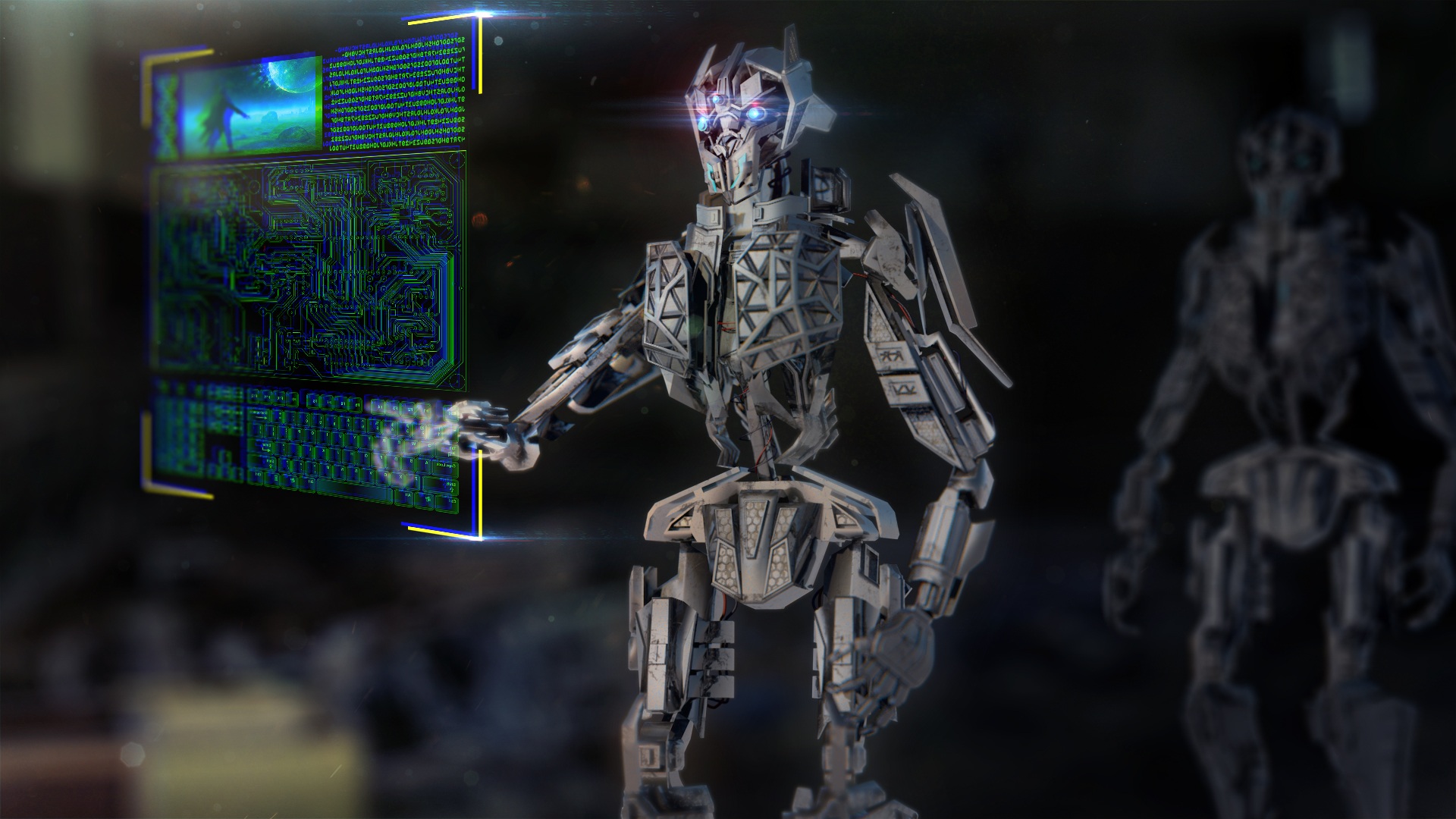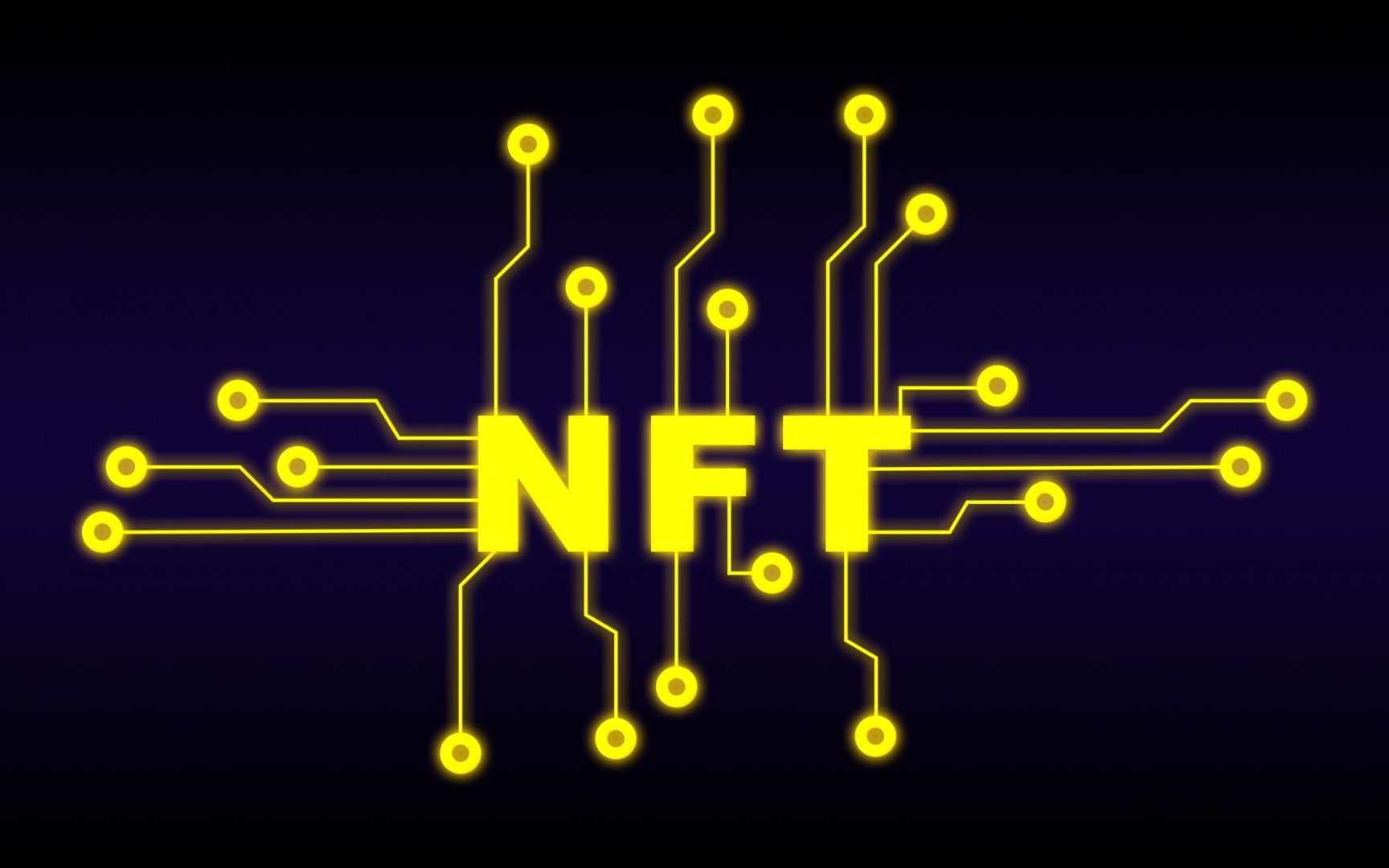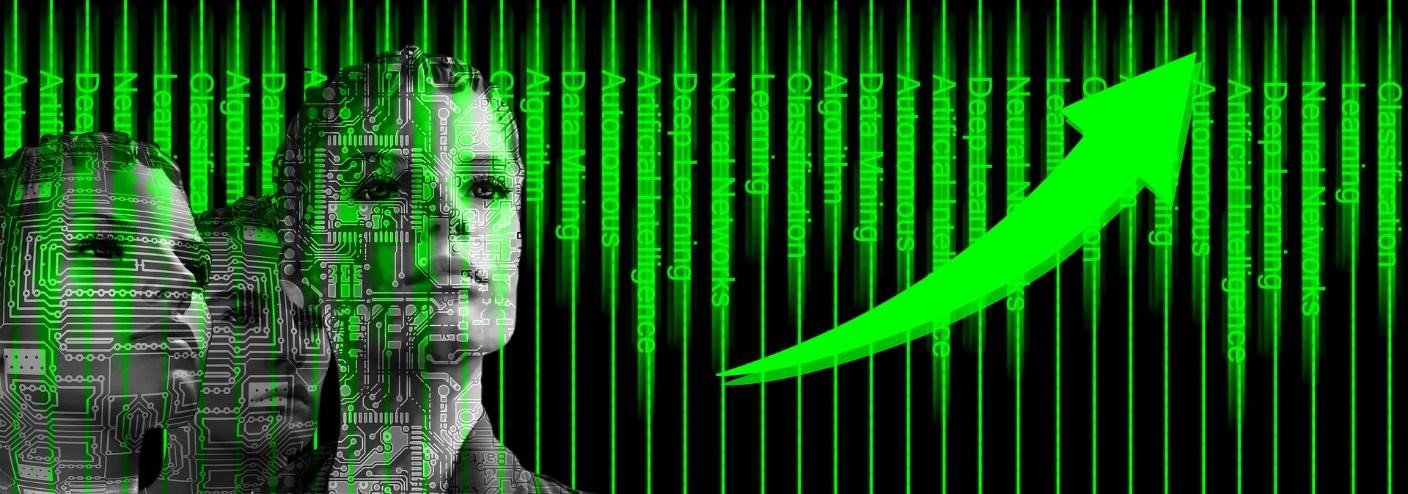Artificial Intelligence (AI) is defined as “Systems which exhibit intelligent behavior through an analysis of their environment and by taking appropriate action while displaying some autonomy in order to achieve specific goals. In short, Artificial Intelligence (AI) systems can be pure software based, acting in virtual environments through voice assistants, image analysis software, algorithms for searching the Internet, speech and facial recognition systems, etc. It is imperative that businesses such as automobile manufacturers and technology companies realize that artificial intelligence (AI) can be adapted to hardware devices such as advanced robots, autonomous vehicles, drones, or Internet of Things applications. Artificial Intelligence has the potential to transform the fashion industry from the way that fashion companies manufacture their products to the manner in which they are marketed and sold.
Fashion is considered one of the biggest industries in the world, and it has estimated to have $1.5 trillion a year. AI is also reshaping the fashion industry to a large extent. There hasn’t been much change when we consider the fashion industry in the past years. Additionally, it is a booming industry. It is accessible to source low-cost manual labor in many countries and outsource high production costs. Additionally, there is also a considerable concern regarding the wages pollution, satisfying the hyper-connected consumers.
We live in an instant age of technology, and social media is changing how fashion was consumed previously. It gives the customers instant access to the latest trends after hitting the catwalk. The younger generation that wants to stand out from the crowd tends to lean towards individual preferences. Despite that, fast fashion and mass-made clothing have also lost the appeal that they had before.
As the customers’ lives become entangled with the other technology, the need for the latest technology comes in. This also helps push the limits of manufacturing, production, marketing, and we arability. This is where different technologies such as 3D printing, blockchain, mobile trends come in.
Fashion is currently undergoing a revolution due to artificial intelligence in all aspects of its value chain, including design, manufacturing, logistics, and marketing. As fashion brands strive to maximize user shopping experiences, they are increasingly concerned and attracted to artificial intelligence and machine learning. It also enhances sales processes through the use of predictive analytics and guided sales processes, as well as effectively automating sales systems. Fashion is currently experiencing a critical juncture. A key factor to the continued growth of the manufacturing and service industries is their adoption of new and emerging technologies, such as mobile internet, advanced analytics, virtual and augmented reality, robotics, and artificial intelligence. The digital disruption created by these changes is dramatically impacting the industry and setting the scene for a phase where mainstream consumers have decided to adopt digital media to their own advantage. The methodologies employed are tailored specifically to meet various trends in consumer and business behavior.
According to IBISWorld, the global apparel manufacturing industry will grow 5.8% year over year from 2020 to 202 as a result of our commitment to staying current with all the latest fashion trends. Despite the fact that Mckinsey reported a 20% drop in the fashion industry revenue in 2021, this was largely due to the closure of Small and Medium Enterprises, which were forced out of the market due to financial hardship, leading to greater inequalities in the market. At the same time that the fashion industry is experiencing disruptions, this also increases the threat of planetary catastrophe.
Multifaceted factors contribute to the impact of the fashion industry on our planet. Each step in its value chain has contributed to the sustainability crisis, starting with fiber production, through design, production, delivery, use, and after-use disposal.
Novel fabrics
Novel fabrics can be defined as the future of fashion as the designers use and set themselves apart as they appeal towards sustainable options. Many startups are opting towards eco-leather creating lab-grown leather without harming the animals. This technology also the printed objects to change color with the help of MIT researchers called ColorFab 3D. This technology also uses photochromic inks that help change the color when exposed to UV light wavelengths.
These highlights how the novel fabrics will reshape our garments every day. These novel fabrics are popping out across the globe, and it seems that there is no slowing down in the technological trend.
Visual merchandising
Fashion brands have focused on the value of designs and the shop floor to attract consumers. Visual merchandising is known to send data to the right product that has the proper styling at the right place and targets the right segment of the users. This helps the store implement brand designs in the digital forefront to develop the relationship bond between the brand and the consumers. This is also important to help with customer acquisitions.
Customer personalization
With the increase in data processing, designers are using AI analytics to hyper personalize their shopping experience, and here is how a personal AI can be:
- Clothing design: this uses the optimal algorithm that helps analyze the possible trends. This AI develops new and comprehensive clothing complete with sewing patterns. The retailers also opt for AI-designed clothes for manufacturing firms and implement these additional steps to simplify the pattern-making and fitting process. A brand known as stitch fix uses advanced data analytics to deliver the customers personalized products. It also provides price and style preferences that best align with the product.
- Personalized recommendations: AI is also used to drive traffic to other products with the help of the recommendations feature. Amazon has reported having a 55% of the overall revenue based on the customers’ requests.
This method was almost impossible before using the algorithm model or AI. A vast amount of data was needed to refine the findings into something insightful. The brands had to use knowledge and computational resources of the technology to identify the shopper’s needs and influence their experiences based on past history, purchases, favorite color, textures, and many other styles.
Visual search
Like text-based research, the visual analysis provides, interprets, and recognizes the users’ input. This offers the best search result possible with the help of this data. Instead of making the humans think like the programmers, the traditional text search works; visual search switches the script. With AI, the computer hears, interprets, and takes visual cues from humans. Numerous brands are opting for custom machine learning that, with the help of an extensive catalog of products, display similar search results relevant to the suggestions.
Combating counterfeits
When an individual searches for something in the massive online marketplace, it might become difficult for the customers to identify any counterfeit product from the third-party vendor. When the customer purchases a product that is similar to a genuine-looking product but performs poorly, this might have bad taste and negatively affect the view of the customer of the brand.
Many brands attract their customers with the help of large database sets and photos from various online markets that use AI to evaluate and determine potentially counterfeit products. The criteria of posting rate of account, the type of items they sell, and the presence of false reviews are all used to point to a counterfeit product.
Productivity Improvement
One of the primary advantages of AI technology is that it allows fashion companies to automate the daily and mundane activities that humans typically carry out. Several tasks such as the data entry and the customer service are now performed with the help of data entry. This also allows humans to focus on a strategic task that requires a human. The automation of data has led to improvement in productivity. This will also result in productivity. There are several advantages to that as well, such as:
- Smart information system: the associates in the store have several positions to play. This is not limited to acquiring, handling, or storing inventories. Instead, they have to provide product information, keep track of promotional deals, and manage the merchandising.
- Return reduction: The return of the sold goods is one of the significant pinpoints for the fashion industry. The help of AI-enabled customization and product specification helps consumers become more knowledgeable and less likely to purchase the wrong product. This has helped to decrease the number of items and instead increase the customers’ loyalty.
Trend forecasting
This also helps to forecast several colors, materials, trends, and patterns. Additionally, it also determines past retail success and future performances. AI enhances confidence and provides a confident decision-making phase of fashion product creation.
Fashion Designers Using Artificial Intelligence
In order to make a costume appealing to the customer base, it needs to have the right design and patterns combined with the appropriate colors. In order to reduce the forecasting errors, AI detects the new trends in demand.
Fashion trends are continuously changing as new designs and patterns come out every day. It is imperative that the designers stay up-to-date with the latest trends. Additionally, artificial intelligence algorithms can analyze images and replicate popular styles through image analysis.
Once the data is analyzed, AI is used to identify what kinds of clothes sell well and what types of clothes do not sell well in the market, and them to create or recommend designs for designers to build and launch a completely new design.
Companies like Amazon and Walmart have now jumped into the fashion industry and are working to identify spots and patterns and will commence designing fashion trends that customers like and, in the near future, these companies will sell their own brands.
AI in Fashion Manufacturing, Supply Chain, and Retail
Among fashion industries, apparel manufacturing is the most labor-intensive. AI can now perform mundane tasks faster and more accurately, reducing the extra cost of workers on tasks like sewing or sorting.
The machine and robot equipped with artificial intelligence (AI) can easily stitch fabric with perfection while offering quality assurance to ensure that the design colors will match the new shades.
By implementing artificial intelligence into inventory and supply chain management, business processes are sped up, logistics are reduced and shipping costs are cut.
In addition to automating logistics and supply chain processes, AI helps companies find alternate routes for vehicles derailed by unusual circumstances, such as bad weather or construction.
As well as using algorithms, fashion stores are also integrating virtual personal stylists with AI. AI-based system selects the most appropriate items based on their body type, and then human stylists pick the final recommended items.
Fashion Retail and Artificial Intelligence
The use of artificial intelligence and machine learning in retail is also providing an automated method to predict what the customer is likely to buy and what they ignore while shopping.
Furthermore, AI can also track footfalls in retail stores, and record the shoppers’ experience while shopping in the stores, allowing the shop owners to improve their services by getting feedback from their customers.
The AI-backed visual perception based systems are also used to offer store owners a better means of keeping track of the items within their store and also assist to categorize items in their stores, thereby making it easier for them to manage their inventory through an AI-backed automated solution.
Styling fashion accessories with AI Fashion Stylist
Furthermore, artificial intelligence in fashion is aiding each of us with the process of finding that perfect outfit that is appropriate for our body type and fashion preferences. In addition to customized clothing, such AI-enabled clothes and outfits also take the user’s color preferences, body type, and fashion trends into account.
ILUK, a technology-based personal stylist based on artificial intelligence, uses 3D reconstruction and computer vision as its core technologies. In a retail outlet, it will be displayed as a pod. After translating the measurements into the AI software, your face is used to show the outfits that have an identical body mass, shape, size, and colour as yours.
“Virtual Trial” mirror created by Van Heusen allows customers to see how clothes will look on them by just scanning the barcode and standing in front of the mirror, where virtual garments are projected onto their reflection.
Interactive mirrors in the fitting rooms permit shoppers to put on different outfits and then compare them side by side without actually wearing them, allowing them to make a quick decision without putting them on first.
Smart Mirror: Bringing AI to Fast Fashion
Similar to the AI mirror technology, the retailer store is using smart mirrors to simplify shoppers’ shopping experiences by offering customers a virtual representation of what clothes will look like on them without putting them on.
Smart mirrors are often installed in changing rooms of retail stores, with touch screen glasses that provide information such as whether a person and the items they have purchased are in the room.
The Smart Mirrors come with RFID-enabled clothing racks that use Bluetooth low-energy chips and gyro-sensors to automatically display the shopping items selected by shoppers.
A customer can use this mirror to locate different sizes and colours and receive customized options for mixing and matching.
Located in the flagship store of Rebecca Minkoff in New York City’s fashion district, the store’s interactive mirror showcases the latest Rebecca Minkoff content. With the mirror, shoppers can browse a variety of looks and add them to their fitting room for trying on.
Each fitting room comes with an interactive mirror that allows a customer to speak with a stylist, change the lighting, and store items she has tried on during her last visit to a personal profile that can be accessed at any time in the future.
Recommendation in ecommerce using AI-based fashion
Similarly, AI is revolutionizing online shopping and e-commerce just as it is doing in retail fashion. A model in Artificial Intelligence suggests similar items when you browse or search fashion items on e-commerce sites, based on your color preferences, your budget, and other factors.
In actuality, the machine learning technology is being utilized here to analyze your filtering behavior and what kind of products you are looking for. The system analyzes a customer’s search history data and recommends other items that you may find useful.
With AI, you can find products by looking at a camera
A technologies based on AI is used by E-commerce stores nowadays to determine the content and context of the images and to return a list of related products. With a camera, one can scan the image of an object online and find its related products.
The ability of retailers to suggest thematically similar items to shoppers using AI-enabled computer vision technology is a value proposition they would not be able to achieve with a text query alone.
It is actually the annotated images that make the clothing items recognizable to the AI visual search model that is trained with a large number of data sets.
A machine can also recognize objects within a picture using machine learning algorithms. By taking advantage of this, sellers can create cross-selling opportunities for their products.
Media companies can turn fashion sites into a personalized shopping experience by using visual search, on the other hand.
Fashion Industry and Artificial Intelligence
Fashion is one area where artificial intelligence is playing an increasingly important role, with a wide potential scope to integrate this AI into various other subfields. Using it, fashion businesses are redefining how they interact and engage with their customers.
With artificial intelligence-enabled apps and systems, the customer is provided with a more personalized experience that goes beyond personalized ads and price drop notifications.
The technology puts customization at the center of a company’s buying journey, allowing brands to put customers’ needs first.
The use of Artificial Intelligence will not only help predict upcoming trends, based on the fast-changing environment, but could also help designers to reduce the negative environmental impacts of producing garments and accessories.
Additionally, the technology of 3D printing will also be enhanced using artificial intelligence. As a result of 3D printing, designers will be able to transcend any limitations in their design efforts, as it will give them an opportunity to turn the most impractical of projects into reality.
The Fashion Industry and Artificial Intelligence
Now that online shopping for clothing and fashion accessories has become more common, consumers are becoming aware of the AI-powered features. By taking a picture, customers can match accessories and clothes of different brands to achieve the same design.
Furthermore, through automated warehousing management, failures are reduced and the product delivery process is made faster.
Apps featuring artificial intelligence are now available to companies and brands to solicit feedback and suggestions.
AI will enhance the fashion industry’s ability to understand customer sentiments and fashion preferences by making it more intelligent.
The program will have a long-term positive impact on the entire industry, enabling manufacturers to introduce the most demanding clothing lines timely with more precision.
Furthermore, it will give customers the opportunity to explore more products with a personalized shopping experience that accommodates their choice, personality and affordability.
A customer will be able to find the right costumes and fashion accessories simply by displaying them virtually to decide which is the best.
Conclusion
With artificial intelligence, we can reduce the number of errors in trend predictions and forecast trends more accurately, thereby reducing the volume of clothing produced and then unused. Artificial intelligence is available in a number of aspects including Machine Learning, Deep Learning, Natural Language Processing, Visual Recognition, and Data Analytics. As fashion manufacturers innovate using artificial intelligence in their manufacturing processes, they are augmenting and increasing the efficiency of the human workforce in textile manufacturing. According to estimates, by 2025, AI technology will grow to $7.3 billion worldwide. It is no surprise that machine learning is on the rise in retail, so it shouldn’t come as a surprise that Artificial Intelligence (AI) is fast becoming integral to the fashion and apparel industry.










4 Comments
Great Article
Congratulations on the content. Interesting.. 58508321
It was a pleasure reading this article and I would like to thank you for it.
I really enjoyed reading this article